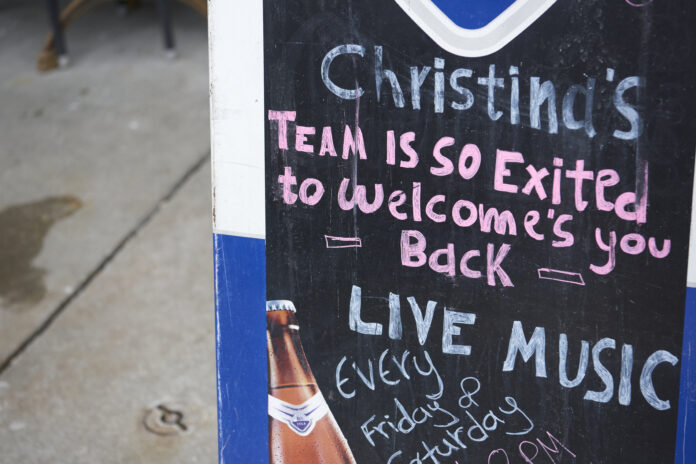It’ll take more than the current surge in COVID-19 cases to get provinces to bring back serious restrictions — but none are willing to divulge exact figures of just how much worse things would have to get.
Multiple provinces, including Ontario, P.E.I., Newfoundland and Labrador, Manitoba and Alberta said a major factor they consider when it comes to deciding whether to re-impose restrictions is whether a wave threatens their region’s health-care capacity.
As things stand now, the provinces told Global News they’re confident they have the health-care capacity to handle the current wave of COVID cases — though they didn’t say exactly what that capacity is — and they will adjust their stances if that changes.
“The latest modelling shows that our hospitals and health system can manage any of the projected scenarios, while not compromising our ability to continue addressing the surgical backlog caused by the pandemic,” wrote Bill Campbell, a spokesperson for Ontario’s ministry of health.
COVID-19 infection numbers go up as B.C. prepares to lift another pandemic health measure
Alberta echoed the sentiment in their own statement, saying the numbers of patients in the province’s hospitals remains “stable” or are “down recently” — and that they’re definitely “within normal bed capacity overall.”
“We do not expect to see the hospitals strained as they were in the initial omicron wave but we’ll continue to monitor closely,” said Steve Buick, a spokesperson for Alberta’s health minister, in an emailed statement.
Global News reached out to every province and territory Wednesday morning, but most did not reply by the time of publication.
The provinces that responded did not attach specific metrics to their decisions about COVID-19 restrictions.
Buick said there’s “no single numerical threshold” for returning to COVID rules, but rather it’s a “judgment that would weigh all the indicators of risk of overburdening the health system.”
Manitoba’s spokesperson, meanwhile, said the province reviews “a number of factors” including “hospitalization data, test positivity, case counts etc” and that “if” any changes to the current public health orders are needed, they’ll “announce” them.
As for Yukon, their government said decisions about public health measures “rely on a risk assessment,” but they did not elaborate.
Trending Stories
Ed Sheeran wins ‘Shape of You’ copyright lawsuit: ‘Coincidence is bound to happen’
2-year-old accidentally shoots, kills 4-year-old sister at Pennsylvania gas station
It can be difficult to quantify a clear point when COVID restrictions are needed, according to Newfoundland and Labrador’s chief medical officer, Dr. Janice Fitzgerald. Things like vaccination levels and prior exposure to COVID can lessen the severity of cases, and she said there can be variation in the extent of care that’s needed for each case.
Fitzgerald reiterated, though, that the province’s health-care system should be able to manage the current projections — as did a spokesperson from PEI’s government.
COVID-19: Quebec extends mask mandate to late April
The opaque threshold for how many COVID cases are too many COVID cases comes as doctors and health experts warn Canada is sprinting towards a BA.2 subvariant-driven wave of COVID-19.
This surge in cases, they say, has been made worse by provinces opting to lift restrictions, like masking and proof of vaccination requirements, in most settings.
“Masks need to go back on very quickly. Otherwise we’re going to have a lot more cases on our hands,” said Dr. Kashif Pirzada, an emergency physician in Toronto, in an interview with Global News earlier this week.
Chief Public Health Officer Dr. Theresa Tam and her deputy, Dr. Howard Njoo, have both made similar comments, urging Canadians to keep their masks on — even in provinces that don’t require it, which is all but three jurisdictions in the country.
As things stand now, only Nunavut, P.E.I. and Quebec still have their mask mandates in place. Nunavut is slated to drop the requirement on Monday, however, while Quebec just extended the rule amid rising COVID cases.
Meanwhile, Canada is undeniably experiencing an uptick in cases across the country, with a 28-per cent increase in daily average case counts as of March 31, according to the Public Health Agency of Canada (PHAC).
Hospitalizations are starting to rise in many provinces, too, including Ontario and Nova Scotia.
Health Canada said they’re watching the “evolving situation at home and globally” and will “adjust measures as required to protect the health and safety of Canadians.”
Federal decisions about the COVID-19 restrictions under their control, such as border measures, are “based on scientific evidence and an assessment of domestic and international public health measures,” a spokesperson said, “and are made in consultation with provincial, territorial and international governments.”
Meanwhile, as Canadians watch for any changes to loosened COVID-19 restrictions, doctors are watching with concern.
“The governments don’t really have our back anymore,” said Pirzada, who added that hospital staff are grappling with underlying burnout and an increase in admissions.
“This is kind of a do-it-yourself pandemic,” he said.
“If you have any symptoms, stay away and protect other people, wear a mask in indoor spaces, use rapid tests and try to fix the ventilation in places where you’re working or going to school. That’ll go a long way.”
— with files from Global News’ Saba Aziz
© 2022 Global News, a division of Corus Entertainment Inc.



